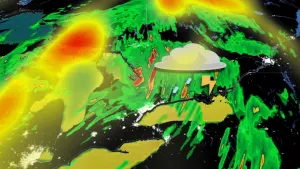
From fires to floods: Canada's 2023 was a fury of record-breaking weather
The year 2023 in Canada won't be forgotten any time soon, thanks to the many extreme events that transpired. From record-breaking wildfires and heat to the country's strongest tornado in five years, it was a memorable 12 months.
There was no shortage of extreme weather events in Canada this year, headlined by the record-breaking wildfire season, undoubtedly.
It won't be a year Canadians will forget any time soon, thanks to the many extreme events that transpired. From record-breaking wildfires and heat to the country's strongest tornado in five years), it was a memorable 12 months.
SEE ALSO: Crews find destructive Canada Day tornado in Alberta was an EF-4
Once wildfire season ramped up, it didn't take long for it to be deemed Canada's worst this century. With fires still raging in the country, it will be hard to get a conclusive tally on the blazes and the hectares burned until the new year.
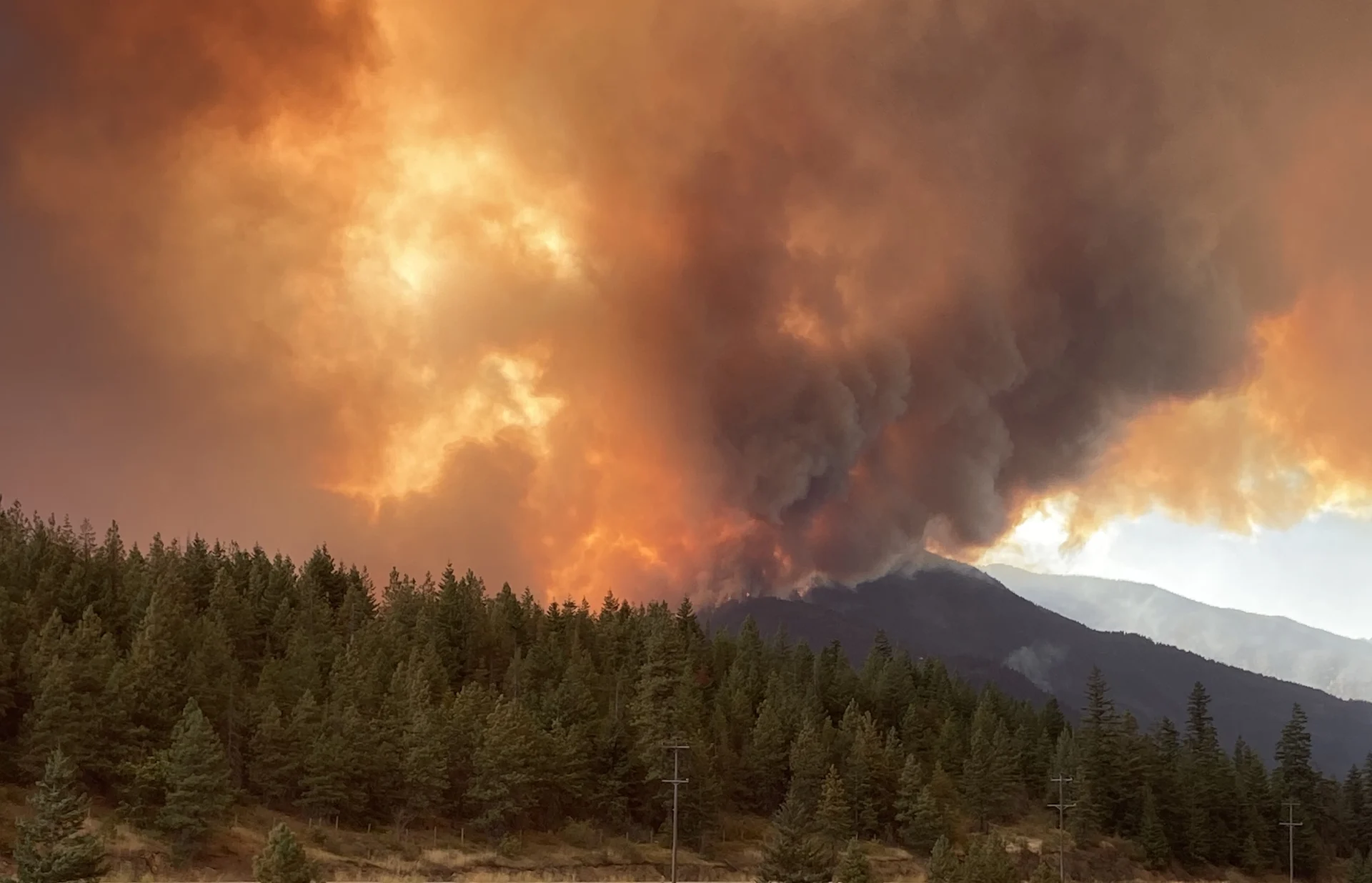
(BC Wildfire Service/X)
Read on for a small recap of Canada's wicked weather that occurred between January and December 2023, outlining five of the most notable events.
No. 1: Explosive, record-breaking wildfires, and smoky skies
The wildfire season got off to an early and quick start, with fires springing up in Alberta and Nova Scotia in May, followed by B.C., Ontario and Quebec as summer began and progressed –– prompting thousands to evacuate at certain points during the season as the blazes quickly spread and became out of control.

You can't have a significant wildfire season without the smoke.
With the wildfires came the copious amount of smoke that infiltrated many Canadian communities this summer, including Calgary and Edmonton, Alta., Ottawa, Ont., Montreal, Que. and Halifax, N.S., just to name a few.
Visit The Weather Network's wildfire hub for a full recap on Canada's record-breaking wildfire season.
At one point, the wildfire smoke resulted in parts of Canada having the worst air quality in the world.
There were hazardous air quality levels for million of Canadians for a number of weeks. Wildfire smoke even set records in Alberta and Saskatchewan.
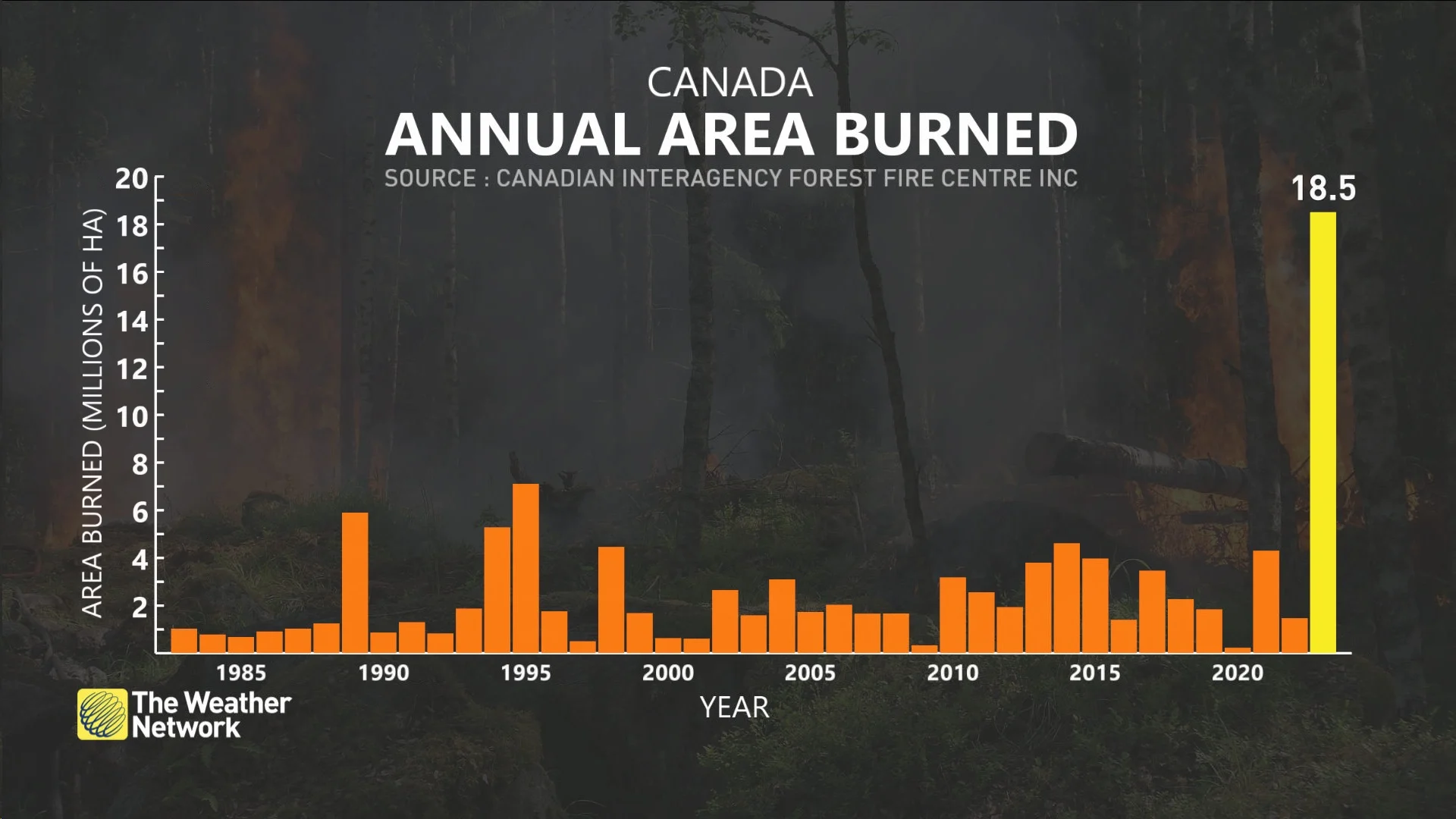
No. 2: Deadly, historic floods
Halifax was hit with significant flooding this summer, not once, but twice -- and only two weeks apart.
The first event occurred in late July. Significant, historic flash flooding swept through communities near Halifax on a Friday evening after relentless tropical downpours dropped 150-200+ mm of rain on the area in just a few hours. It led to the deaths of four people.
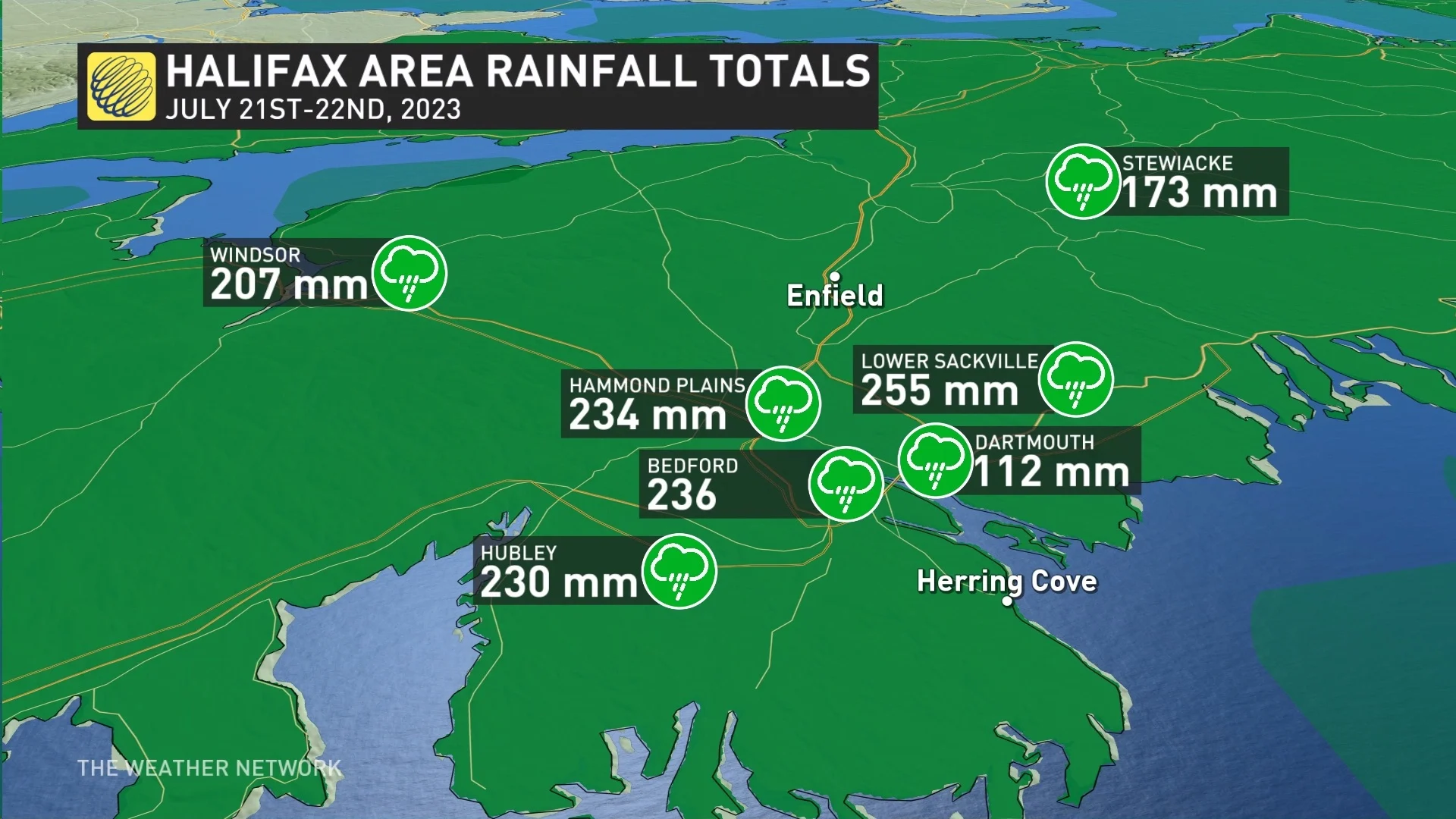
The second incident took place in early August, just two weeks later. Rainfall rates in excess of 30 mm per hour were observed, leading to quite a bit of flooding that forced the closures of some roads. Heavy rain affected ditches, roads and other infrastructure still being repaired from the previous flooding.
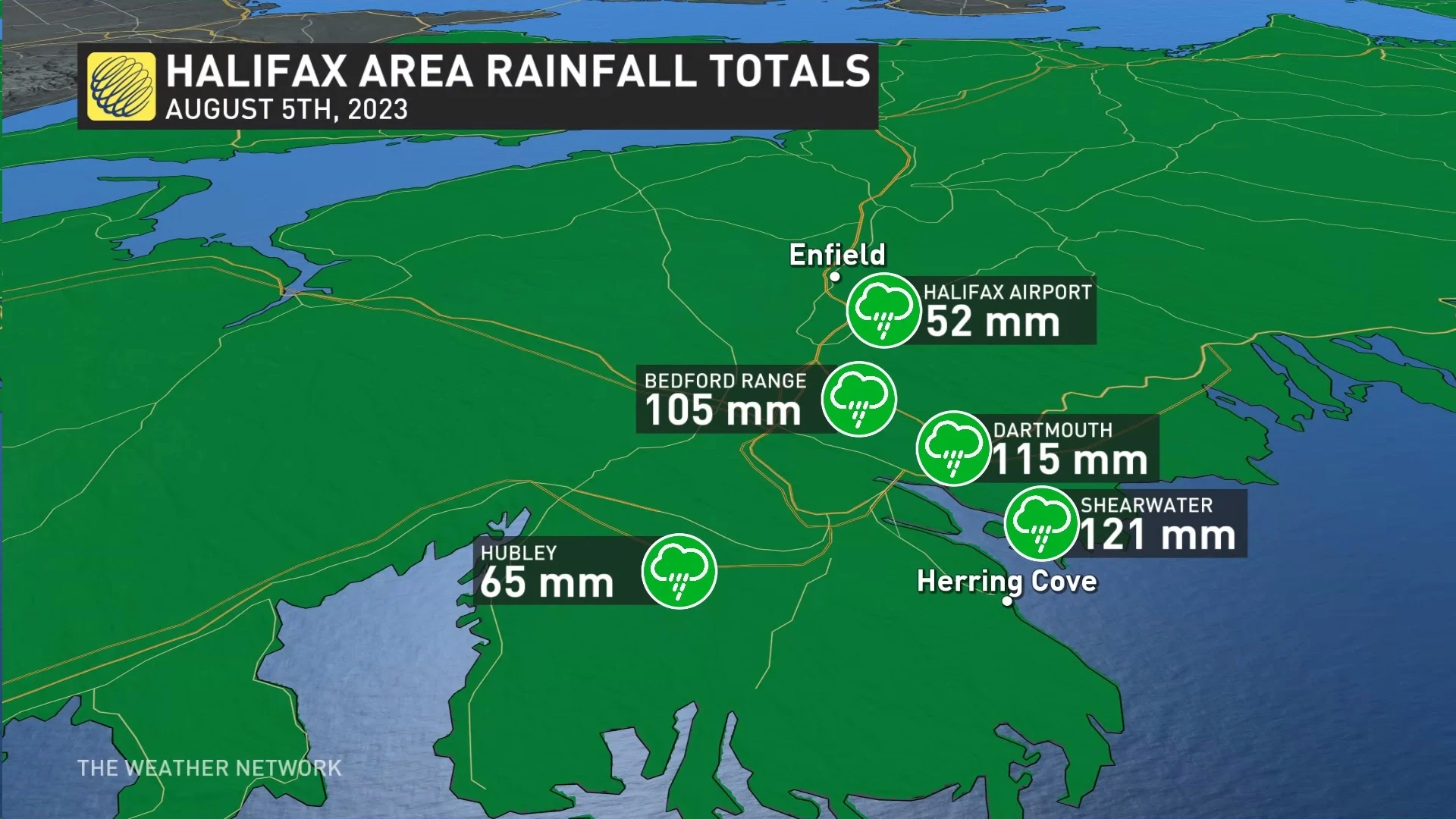
No. 3: Damaging Alberta tornado was the country's strongest in five years
Earlier this year, Canada experienced its strongest tornado since 2018 after an EF-4-rated twister struck Didsbury, Alta., on Canada Day. Miraculously, no one was killed and there were only a few minor injuries.
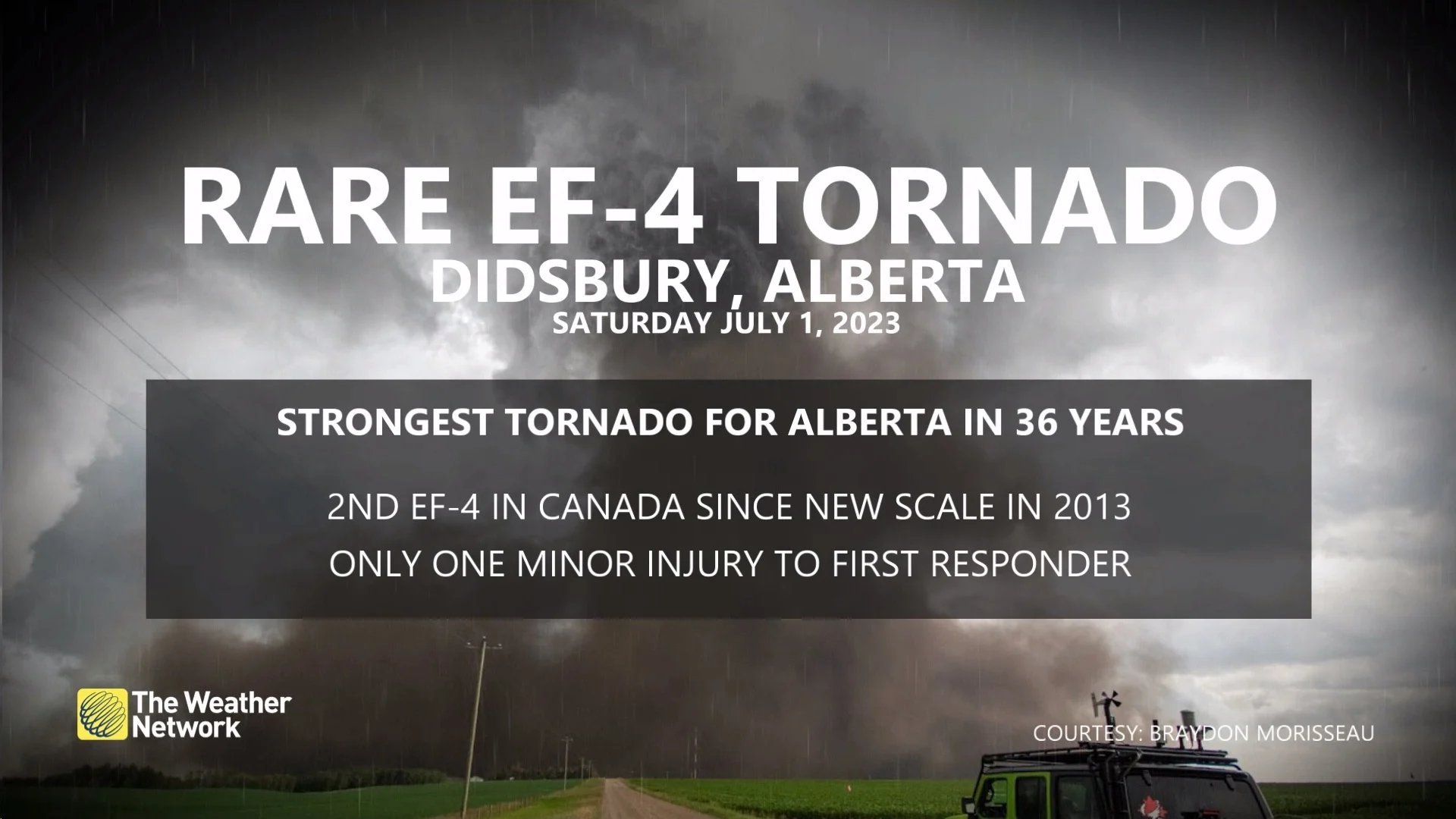
It was also the highest-rated Alberta tornado since the deadly Edmonton twister in 1987, according to the Northern Tornadoes Project (NTP).
A summary compiled by Environment and Climate Change Canada (ECCC) reported several homes damaged by the tornado between the towns of Didsbury and Carstairs, located west of the QE2, about halfway between Calgary and Red Deer, Alta.
No. 4: Ontario sees Prairie-like, gigantic hail in severe storm
It's common to see hail in southern Ontario thunderstorms in the summer, but not stones that are of sizes comparable to what you would see on the Prairies normally. On Aug. 12, that's what happened.
Multiple rounds of thunderstorms powered their way through the region, with some of them developing into supercells, which took full advantage of high instability and favourable dynamics to incorporate rotating updrafts. The rotation allowed the storms to produce very large hail along their paths.

One such storm produced a gigantic, nine-centimetre-sized hailstone in Sunderland, Ont., just southeast of Lake Simcoe. By comparison, that is bigger than a baseball and more commonly seen on the Prairies.
The year may go down as featuring the largest hail season in Ontario and Quebec.
No. 5: Extreme heat in the North
The heat wasn't just exclusive to Southern Canada this year. The Far North got in on the action, as well, on multiple occasions. In July, astonishing heat across the Far North ranked among the hottest temperatures ever recorded near Canada’s Arctic.
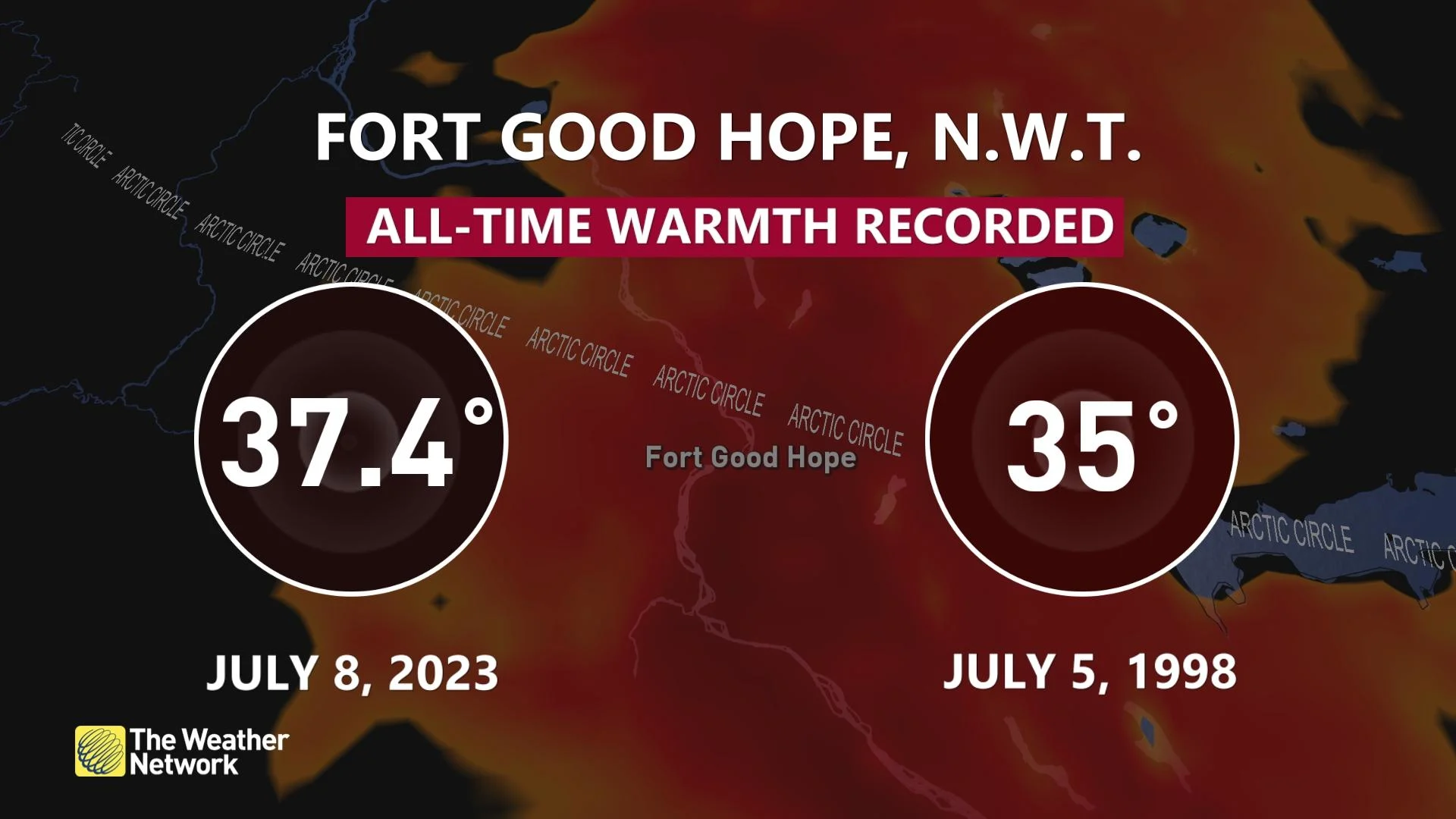
The first week of July broke several records for the globe, not just in Northern Canada. Monday, July 5 was the world’s hottest day ever measured until Tuesday, July 6 broke the record again. Tuesday’s benchmark record itself only stood for two days until Thursday’s global average temperature came in as the new hottest reading on record.
Then, on Saturday, July 8, Fort Good Hope, N.W.T., witnessed an astonishing high temperature of 37.4°C. Saturday’s high temperature in Fort Good Hope eclipsed the community’s previous all-time record of 35.0°C back on July 5, 1998, and it earned the dubious distinction of the Far North's hottest temperature on record.
That wasn't the end of the Northern Canada warmth. All-time, monthly temperature records for December were shattered in parts of Nunavut as a result of the extreme warmth.
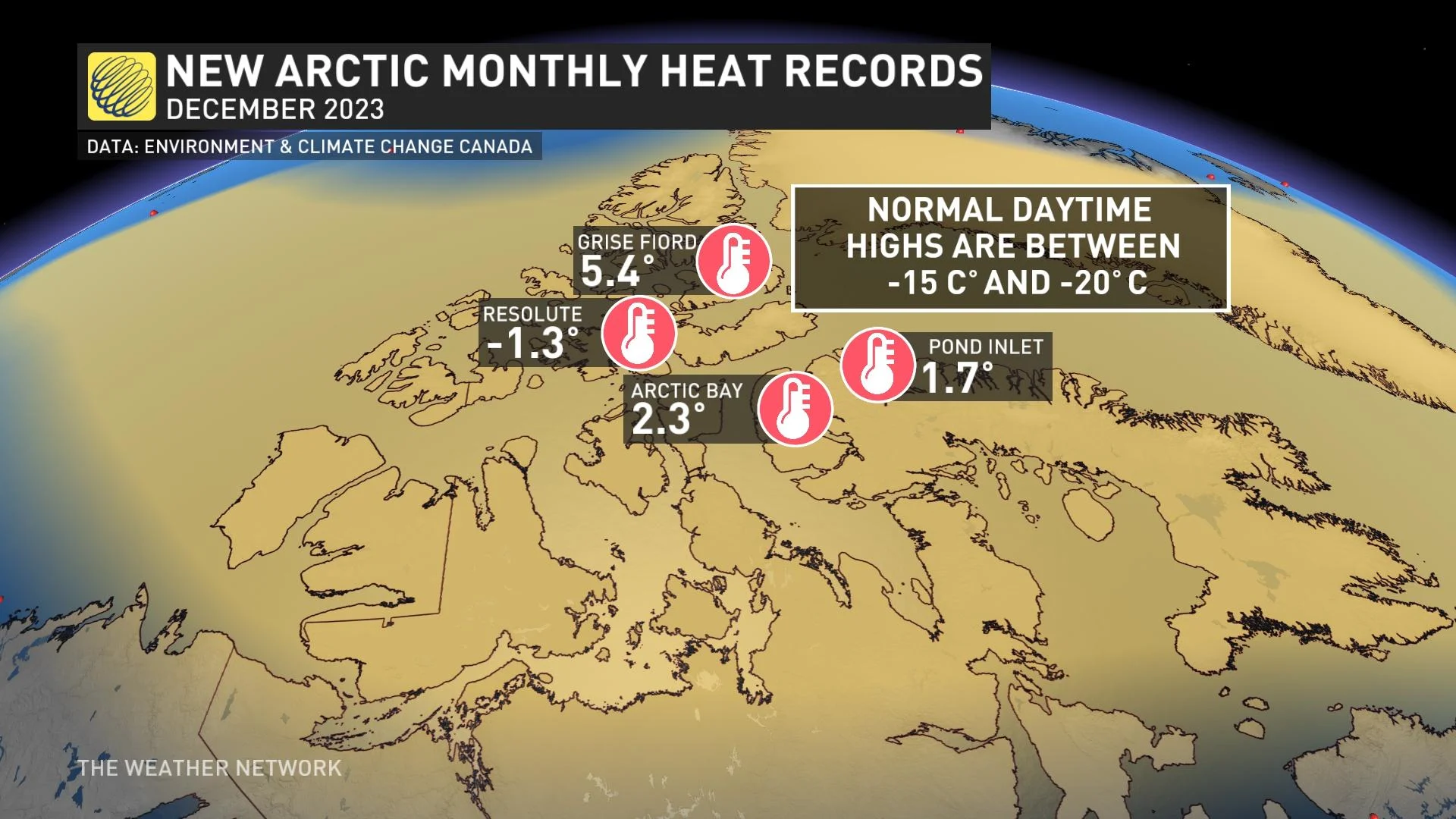
Monthly December records were set in Grise Fiord (5.4°C; a whopping 31°C above average), Arctic Bay (2.3°C), Pond Inlet (1.7°C) and Resolute (-1.3°C).
WATCH: Summer 2023 was a season of records and astonishing sights
We didn't have the space to cover all of the impactful weather events that happened this year. Three other events in 2023 that came to mind can be read, here and here, and here.
With files from Dennis Mersereau, a digital journalist at The Weather Network.
Thumbnail was created by Cheryl Santa Maria. It contains images courtesy of Brett (wildfires), Colleen (flooding) and David Hart (tornado). The hail image used in the header is a stock photo for illustration purposes only.
Follow Nathan Howes on the X platform, formerly known as Twitter.








